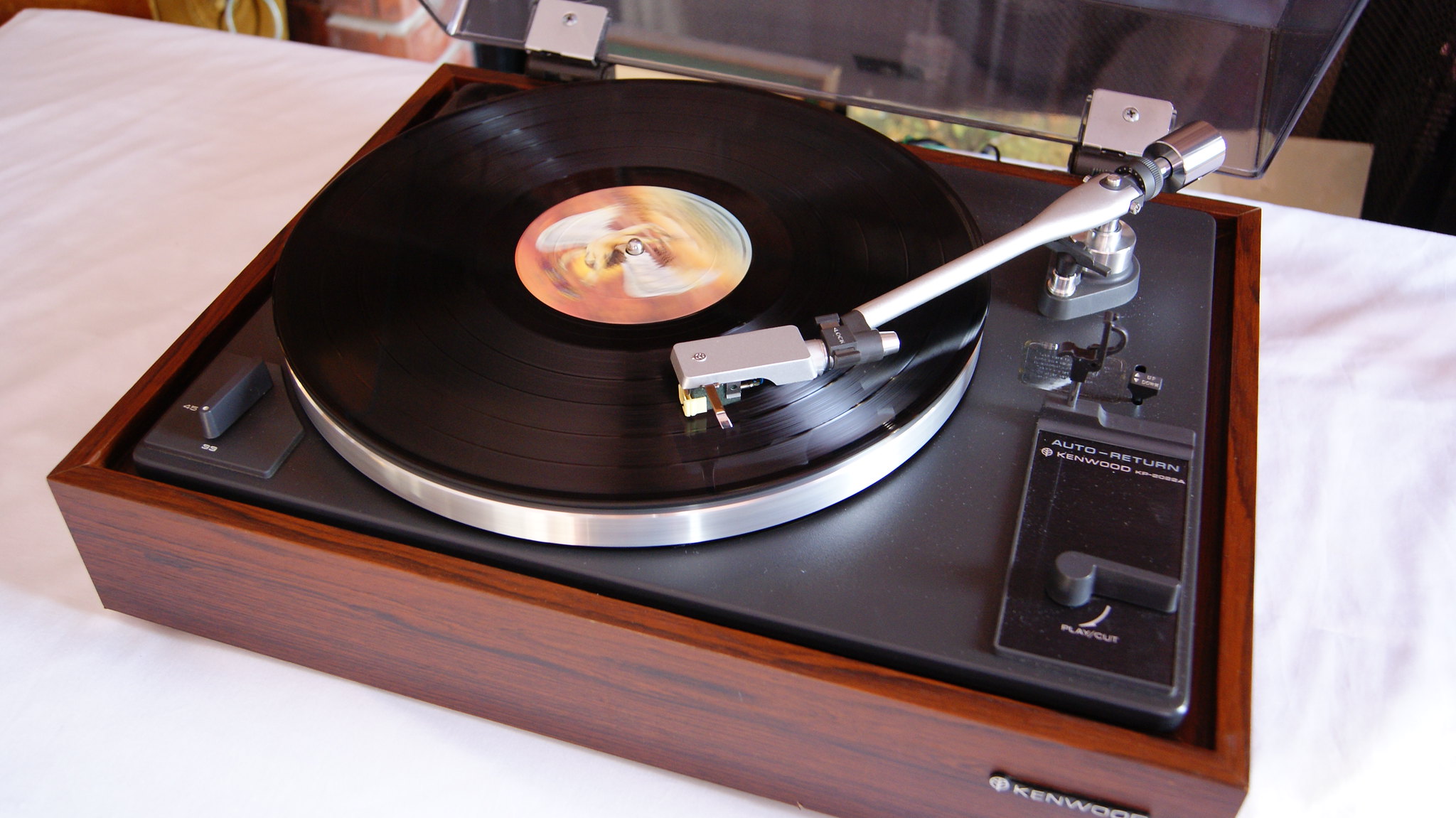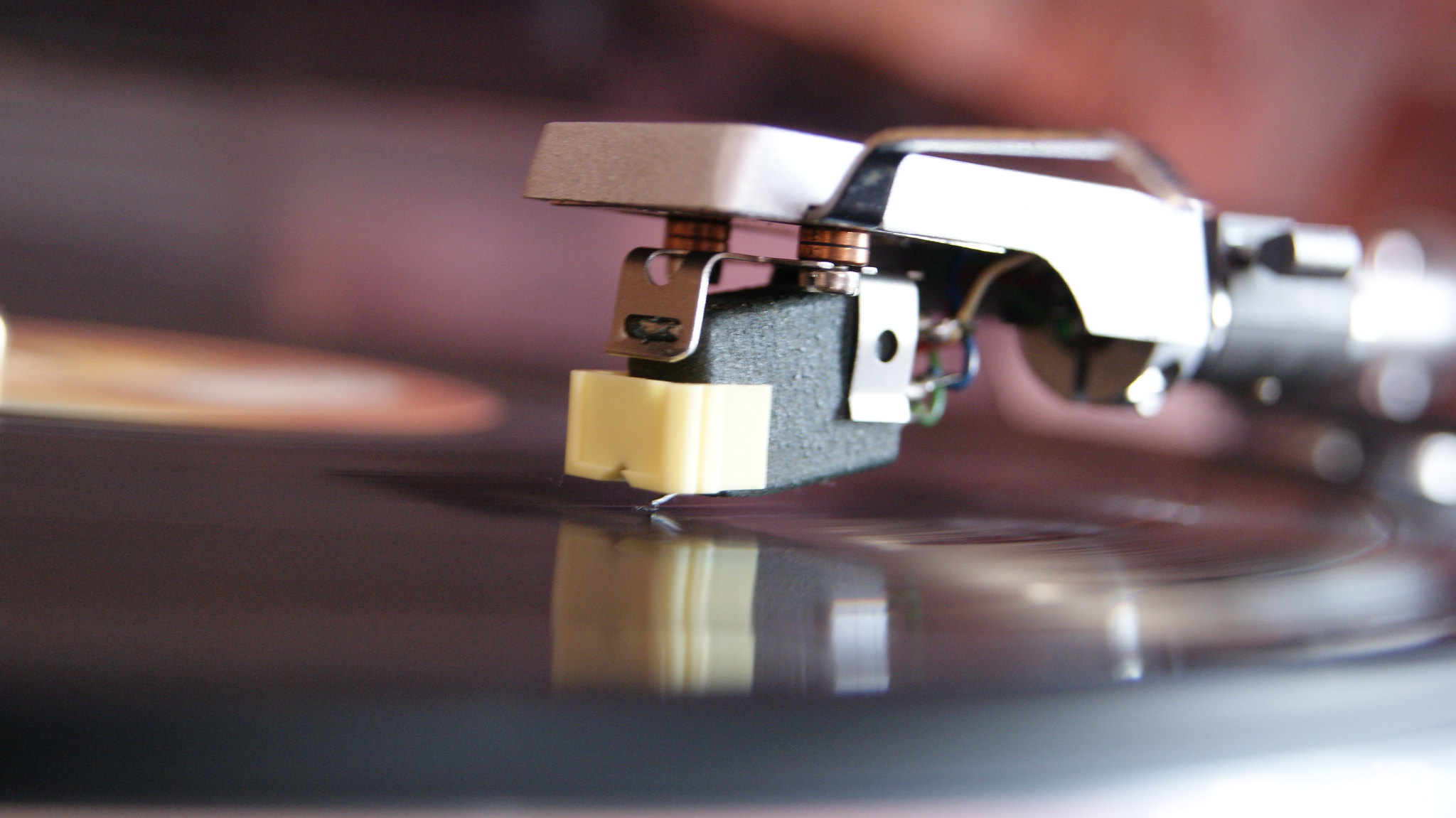Found my camera backup so I thought I would make some blog postings on some of our previously sold turntable for posterity and because I think they are cool and neat, starting with the Kenwood KP-2022A.
The most striking feature is the tone arm, it's neat. The design was to prevent tone arm resonance, much like more modern tone arms. Don't know why the design didn't last because Kenwood went back to the more tradition S-shaped arms. It was also the Trio name plate as well.
At the time, I had several Japanese turntables, the EDS and the Keio which I wrote about quite some time ago (or at least I hope). Oddly enough the Kenwood had some striking similarities with the Keio. I thought the Keio was designed by CEC but, when examining the Kenwood, there is some real resemblance, so I have no idea who made the Keio or even the Kenwood. I will just assume they're all working together somehow.
In any case, was a nice table, typical well made table of the era, good mechanics, motor, and funky tone arm. It had a suspended plinth like your typical early 70s belt drive tables though, I am not a huge fan of the suspended plinth design of that era.
The tone arm did have some adjustment, you could raise the VTA. However, you couldn't use any other SME style headshell only the Kenwood headshell, which is hard to find. Regular SME style headshells don't lock in properly, though it will play fine and look awkward at the same time.
It's your typical belt drive 2-speed, semi-automatic table with that lovely wood grain vinyl plinth and if I recall correctly, RCA jacks to supplement better audio cables.
More information:
http://www.vinylengine.com/library/kenwood/kp-2022.shtml
The most striking feature is the tone arm, it's neat. The design was to prevent tone arm resonance, much like more modern tone arms. Don't know why the design didn't last because Kenwood went back to the more tradition S-shaped arms. It was also the Trio name plate as well.
At the time, I had several Japanese turntables, the EDS and the Keio which I wrote about quite some time ago (or at least I hope). Oddly enough the Kenwood had some striking similarities with the Keio. I thought the Keio was designed by CEC but, when examining the Kenwood, there is some real resemblance, so I have no idea who made the Keio or even the Kenwood. I will just assume they're all working together somehow.
In any case, was a nice table, typical well made table of the era, good mechanics, motor, and funky tone arm. It had a suspended plinth like your typical early 70s belt drive tables though, I am not a huge fan of the suspended plinth design of that era.
The tone arm did have some adjustment, you could raise the VTA. However, you couldn't use any other SME style headshell only the Kenwood headshell, which is hard to find. Regular SME style headshells don't lock in properly, though it will play fine and look awkward at the same time.
It's your typical belt drive 2-speed, semi-automatic table with that lovely wood grain vinyl plinth and if I recall correctly, RCA jacks to supplement better audio cables.
More information:
http://www.vinylengine.com/library/kenwood/kp-2022.shtml



